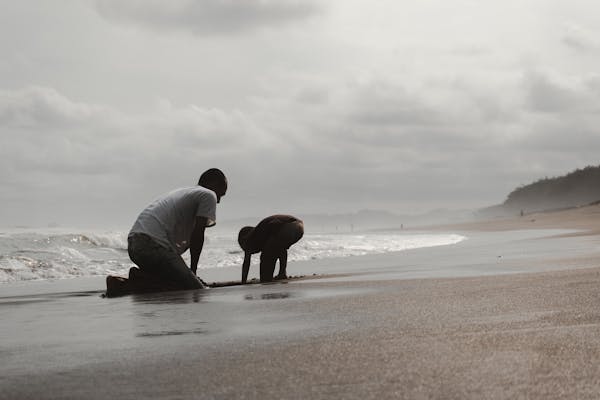“Cuteness,” writes the theorist Sianne Ngai, “hinges on a sentimental attitude toward the diminutive and/or weak… [it’s] a sadistic side to a tender emotion.” The cuties in Marcel Dzama’s artworks are out for revenge on the viewer. In surreal vignettes, hung by the dozen, we see stout little men and coy little girls in violent, sexual, or inscrutable throes; they often act out seductions, but never sensible plots. How’s this for sadism?, they hiss. Even your mind won’t be satisfied!
Grotesquerie per se can be wearing. I prefer Dzama when he seeks to intrigue. Witness these new watercolour-and-ink drawings, at David Zwirner in London, in which the coyly sinister, not the schlocky, prevails. Partygoers bend their arms and grin on beaches spangled with foliage; animals smile at the revels; giant hands loom at the edge of the frame. One dancer in a Venetian mask leaps up to embrace a worried moon. A deep nocturnal blue saturates fish and stars alike, and you know, without truly knowing, that the day will never break.
Many influences are claimed, though mostly to superficial ends. Milton, for instance, hasn’t left his proper mark: His greatest poem may be a romp, but it’s also a theological harangue, whereas Dzama’s Paradise lost cat, 2022, perched on a strip of sand, dips its tail into the ocean with apparent indifference to sin and salvation. These dandy tableaux prefer to exult in a patchwork of petty visual thefts. The dancers’ malevolent smiles give Picabia, while their patterned suits and the tubby sculptures nearby echo Schlemmer’s 1922 Triadic Ballet. All this scenery, carefree and lush, is a visual perfume to drenches the serious aims that Dzama says he had in mind. Such a peculiar achievement, then: You see right through it, yet stay enthralled.
— Cal Revely-Calder






